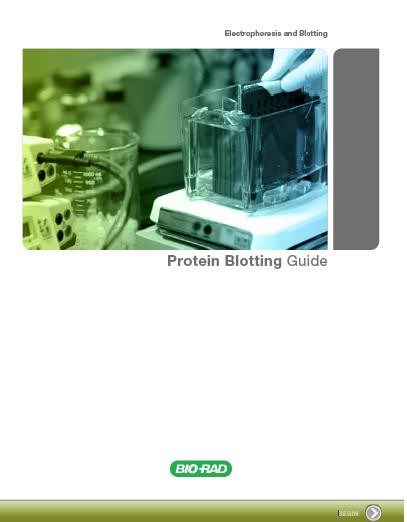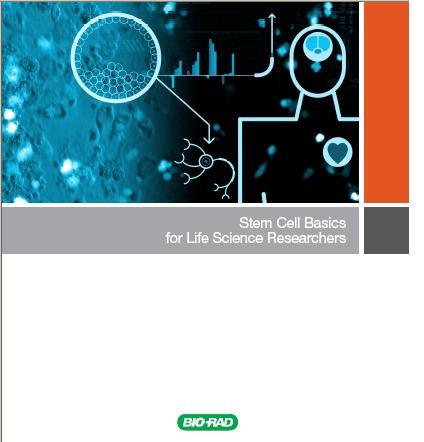Archive for the ‘Protocols’ Category
Single Cell Western Blot
:: Posted by American Biotechnologist on 07-23-2014Purifying Untagged Protein With Ease
:: Posted by American Biotechnologist on 02-10-2014High purity protein is a common requirement for biochemical and structural studies. A common approach is to recombinantly express an affinity-tagged version of the protein of interest. This is, however, not always a viable option. Some proteins are unstable or inactive once tagged or require posttranslational modifications that do not permit recombinant expression. In these cases, researchers often settle for lower purity protein rather than exhaustively explore purification options, since the purification optimization process can be time and labor intensive when no particular column resins or buffer conditions are dictated by an affinity tag.
Bio-Rad Laboratories has recently released a study demonstrating how to purify untagged protein to high homogeneity without undergoing laborious manual troubleshooting steps. Bio-Rad’s ChromLab software can be programmed to execute several runs sequentially thereby automating and accelerating this tedious process.
To learn how to purify untagged protein with ease read Protein Purification Workflow Development Using Bio-Rad’s NGC™ Chromatography System.
Droplet Digital™ PCR: Guidelines for Multiplexing
:: Posted by American Biotechnologist on 01-30-2014Droplet Digital PCR (ddPCR™) enables accurate, precise, and sensitive quantification of specific nucleic acid sequences. In addition to the standard detection of two targets using two different fluorophores, it is possible to increase the number of targets detected by varying parameters that affect PCR efficiency and end-point fluorescence. In this case, we describe a method to multiplex assays by varying the concentrations of primers and probes or the type of fluorophores used. This allows users to expand the number of simultaneously detected targets up to four. Increasing the number of potential targets per test is a significant improvement for ddPCR, dramatically augmenting the information output of each sample.
For more information download the Droplet Digital™ PCR: Guidelines for Multiplexing from Bio-Rad Laboratories.
The State of RT-qPCR: Firsthand Observations of MIQE Implementation
:: Posted by American Biotechnologist on 12-12-2013New Paper Defines Method for Producing Reliable Quantitative Western Blot Data
:: Posted by American Biotechnologist on 06-13-2013The reporting of fold changes in protein expression from western blots is often viewed with skepticism by practitioners and journal reviewers due to questions about the validity of western blotting as a quantitative method. In the May issue of Molecular Biotechnology, researchers at Bio-Rad Laboratories, Inc. reported a method for producing quantitative and reproducible western blot data that could establish the technique’s reputation for reliable quantitation.
Western blotting has been practiced for several decades and is performed routinely in labs to assess the presence of specific target proteins in complex samples. Although the scientific community has historically reported fold changes in protein expression by measuring the differential density of the target protein bands among the samples on western blots, the technique is generally considered to yield only semi- or nonquantitative data because of the methods, reagents, and instruments used to generate these data. This shortcoming led the authors to undertake the present study.
“In my visits to labs, researchers having been asking me how to more rigorously approach western blotting quantitation,” said Dr. Sean Taylor, lead author and a Bio-Rad field applications specialist. “We wrote this article to demonstrate how the application of a simple workflow coupled with the use of updated reagent and instrument technologies can ensure the production of quantifiable results from chemiluminescent western blots.”
Accurate normalization for loading differences is a solvable challenge
To ensure accuracy in western blotting, loading controls are used to normalize for errors that can result from imprecise protein estimation, pipetting inaccuracy, or uneven protein transfer. The most common loading controls are housekeeping proteins. However, these proteins are generally highly expressed in samples and are frequently overloaded in a gel lane with the much lower abundance target protein, thus reducing their usefulness for normalization.
In these instances, total protein normalization using stain-free technology may be a suitable alternative. The study found that using stain-free imaging to quantify the total amount of proteins in each lane yielded results that closely matched the confirmed amounts, supporting the validity of this normalization method. This result was in direct contrast to quantification using the relative density of GAPDH, a common housekeeping protein, which did not correspond well to the actual amounts due to signal saturation at high sample loads.
Modern imaging technology has a greater dynamic range than film
The study also dispelled the widely held view that film should be the method of choice for detecting chemiluminescent western blots. Using a twofold dilution series of a protein lysate, the researchers reported that the CCD-based imaging system provided a linear dynamic range nearly an order of magnitude greater than film (0.04–2.5 ng vs. 0.04–0.31 ng) for the probed target protein. This permitted accurate quantification of the relative target band density between the gel lanes with the imaging system versus film for the identical blots.
“This paper demonstrates how to validate antibodies using an imaging system to ensure that individual samples are diluted and loaded within the quantitative linear dynamic range of each antibody to produce excellent densitometric data,” Taylor said. “It also shows how stain-free technology is a great alternative to traditional housekeeping proteins for normalization.”
To read the Molecular Biotechnology paper describing how to reliably quantify proteins in your next western blot experiment, visit http://bit.ly/MolecBiotech.
















